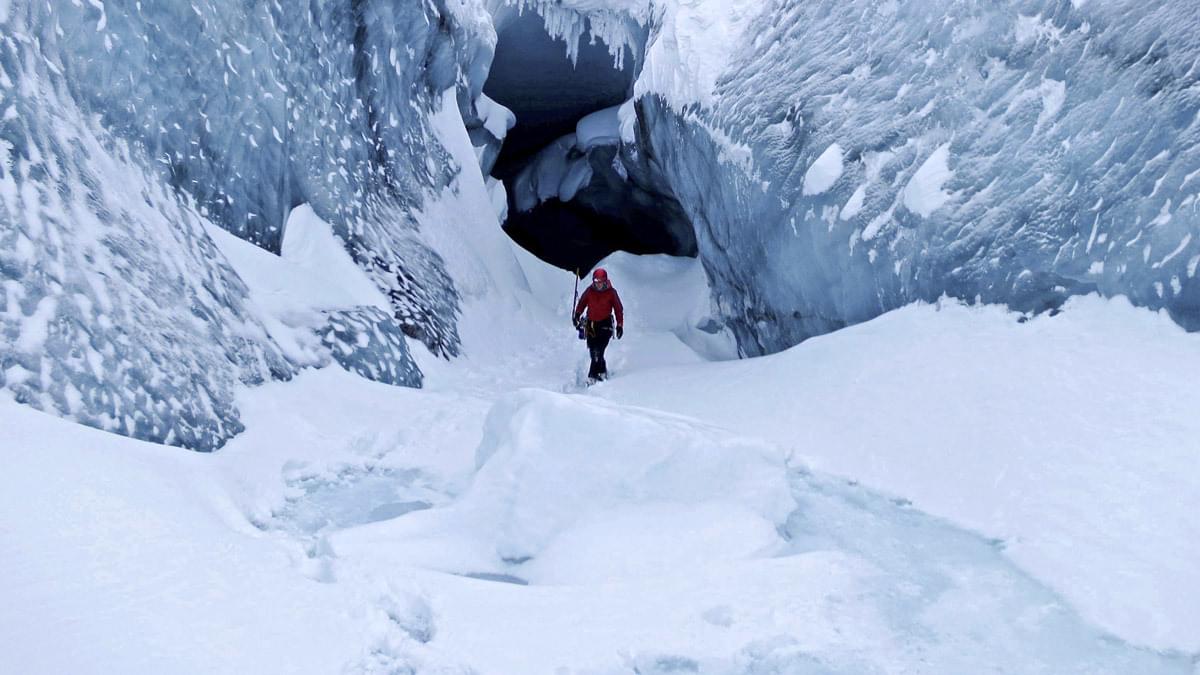
Caring for the Arctic
Svalbard is the fastest warming place on the planet. In this live lesson, students will learn how the environment surrounding the UK Arctic Research Station has changed over the past decades. After a discussion about how these changes make them feel, students will be introduced to an Arctic conservationist who will speak about the work that is being done to conserve this unique place. The final section of the lesson will look at actions that we can all take to protect the Arctic into the future.
Available on catch-up
- 45 mins
- Ages 7-11 / KS2 / Grades 3-5
Learning outcomes
- Recognise that environments can change and that this can sometimes pose dangers to living things
- Explore examples of human impact (both positive and negative) on environments
Preparation
If you have never joined a live lesson before, visit the support centre, where you can find a range of technical and educational information.
Live lessons work best when students have some prior knowledge and have prepared questions. You can select from any of the STEAM activities in the Frozen Oceans collection or teach a one-off Arctic Live prep lesson.
Questions generated by your class can be submitted via the Encounter Live tab in your profile.
Lesson steps
1. Introduction (5 mins)
Jamie will open the session with a welcome to the Arctic and the UK Arctic Research Station. He will give an overview of the lesson and shout-outs to participating schools.
2. Exploring the Arctic (15 mins)
We will visit the area surrounding Ny Alesund, the location of the UK Arctic Research Station on Svalbard, and learn about this beautiful place, and how it has changed over the past decades. Students will be able to use polls to share how they feel about the environment and how it is changing.
3. Caring for the Arctic (15 mins)
We meet a polar conservationist and find out about some of the work being done to preserve these important and beautiful regions of the world. This will flow into a guided activity looking at how students can act to care for the Arctic.
4. Q&A (10 mins)
After the activity, the team will answer students’ questions submitted via the live chat before suggesting other activities classes may wish to try.
Free access for Teacher Plus subscribers
Free access to this live lesson is supported by AXA as part of their Action+ programme. Use the coupon code ILOVETHEARCTIC to receive free access to this lesson, and then email us with the action that you have taken:
- Made a class pledge to care for the Arctic
- Deepen your class's understanding using one or more of the Frozen Oceans investigations
- Taught one or more of the lessons from the Frozen Oceans | Ages 7-11 unit
Speakers
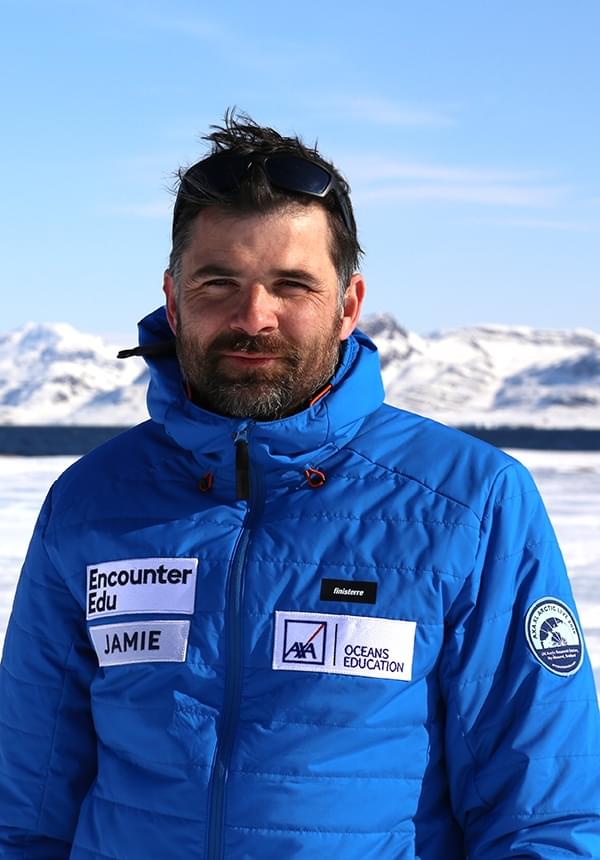
Jamie Buchanan-Dunlop
Executive Director, Encounter Edu
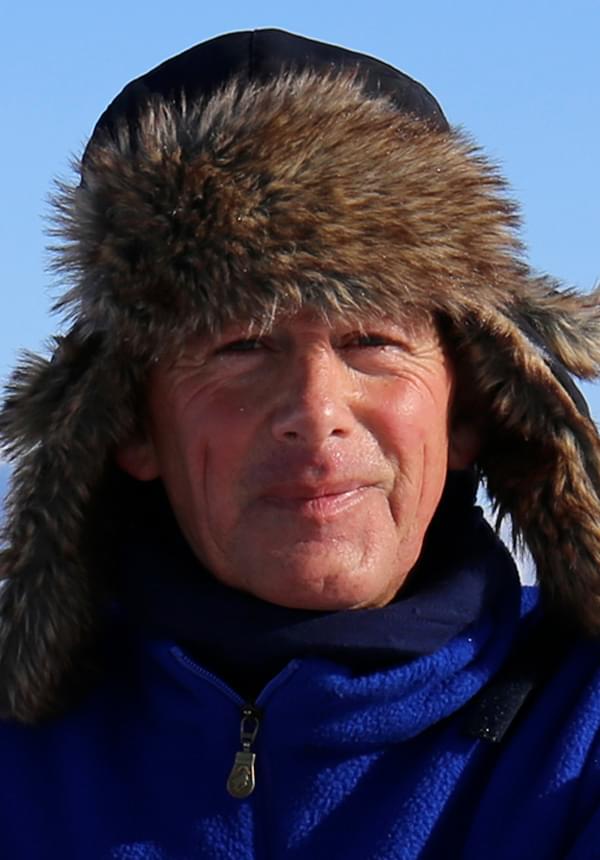
Nick Cox
Station Manager, UK Arctic Research Station, British Antarctic Survey
Brought to you by

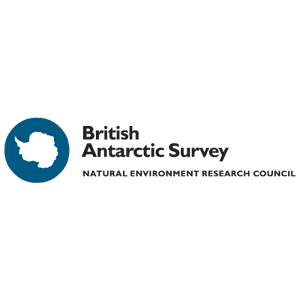
With support from
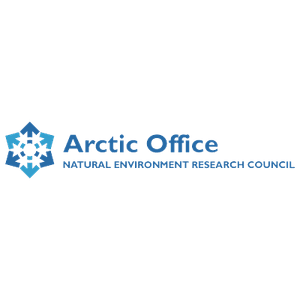

Caring for the Arctic
Svalbard is the fastest warming place on the planet. In this live lesson, students will learn how the environment surrounding the UK Arctic Research Station has changed over the past decades. After a discussion about how these changes make them feel, students will be introduced to an Arctic conservationist who will speak about the work that is being done to conserve this unique place. The final section of the lesson will look at actions that we can all take to protect the Arctic into the future.
Available on catch-up
- 45 mins
- Ages 7-11 / KS2 / Grades 3-5
Learning outcomes
- Recognise that environments can change and that this can sometimes pose dangers to living things
- Explore examples of human impact (both positive and negative) on environments
Preparation
If you have never joined a live lesson before, visit the support centre, where you can find a range of technical and educational information.
Live lessons work best when students have some prior knowledge and have prepared questions. You can select from any of the STEAM activities in the Frozen Oceans collection or teach a one-off Arctic Live prep lesson.
Questions generated by your class can be submitted via the Encounter Live tab in your profile.
Lesson steps
1. Introduction (5 mins)
Jamie will open the session with a welcome to the Arctic and the UK Arctic Research Station. He will give an overview of the lesson and shout-outs to participating schools.
2. Exploring the Arctic (15 mins)
We will visit the area surrounding Ny Alesund, the location of the UK Arctic Research Station on Svalbard, and learn about this beautiful place, and how it has changed over the past decades. Students will be able to use polls to share how they feel about the environment and how it is changing.
3. Caring for the Arctic (15 mins)
We meet a polar conservationist and find out about some of the work being done to preserve these important and beautiful regions of the world. This will flow into a guided activity looking at how students can act to care for the Arctic.
4. Q&A (10 mins)
After the activity, the team will answer students’ questions submitted via the live chat before suggesting other activities classes may wish to try.
Free access for Teacher Plus subscribers
Free access to this live lesson is supported by AXA as part of their Action+ programme. Use the coupon code ILOVETHEARCTIC to receive free access to this lesson, and then email us with the action that you have taken:
- Made a class pledge to care for the Arctic
- Deepen your class's understanding using one or more of the Frozen Oceans investigations
- Taught one or more of the lessons from the Frozen Oceans | Ages 7-11 unit
Speakers

Jamie Buchanan-Dunlop
Executive Director, Encounter Edu

Nick Cox
Station Manager, UK Arctic Research Station, British Antarctic Survey
Brought to you by


With support from


